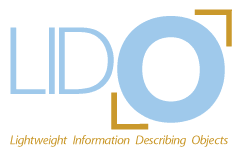What is LIDO?
What is LIDO
LIDO – Lightweight Information Describing Objects is a format for contributing collection objects information for resource discovery. The LIDO XML schema is intended for delivering metadata, for use in a variety of online services, from an organization’s online collections database to portals of aggregated resources, as well as exposing, sharing, and connecting data on the web.
The strength of LIDO lies in its ability to support the full range of descriptive information about museum objects. It can be used for all kinds of objects, e.g., art, architecture, cultural history, history of technology, and natural history.
LIDO supports multilingual portal environments. It does this by having a language attribute that can be associated with each element, or more generally, with the group of descriptive elements for fully multilingual resources.
Why LIDO
Organizations need to provide information about their objects to many portals or aggregators including those that are thematic, cross-domain, regional, national, and international. The difficulty, for the portal or aggregator owner, is that the object information is in the providers’ own collections management systems and cataloging databases. Each of these has potentially a different metadata format. This means that it is both time-consuming and costly to integrate information from all those organizations wanting to participate.
Using LIDO to provide a harvestable set of an item’s descriptive metadata enables the organization to participate in such initiatives in a standard way. LIDO provides a cost-effective solution for the:
- Providing organization, which can supply the same data to many portals and aggregators.
- Portals and aggregators, which can be supplied with data from many organizations.
In both cases, the benefit is gained by not having to carry out multiple metadata mappings.
For more information on the history, background, and use of LIDO, see
- LIDO Primer
- LIDO Introduction, 2023 (slides: PDF, video: MP4)
